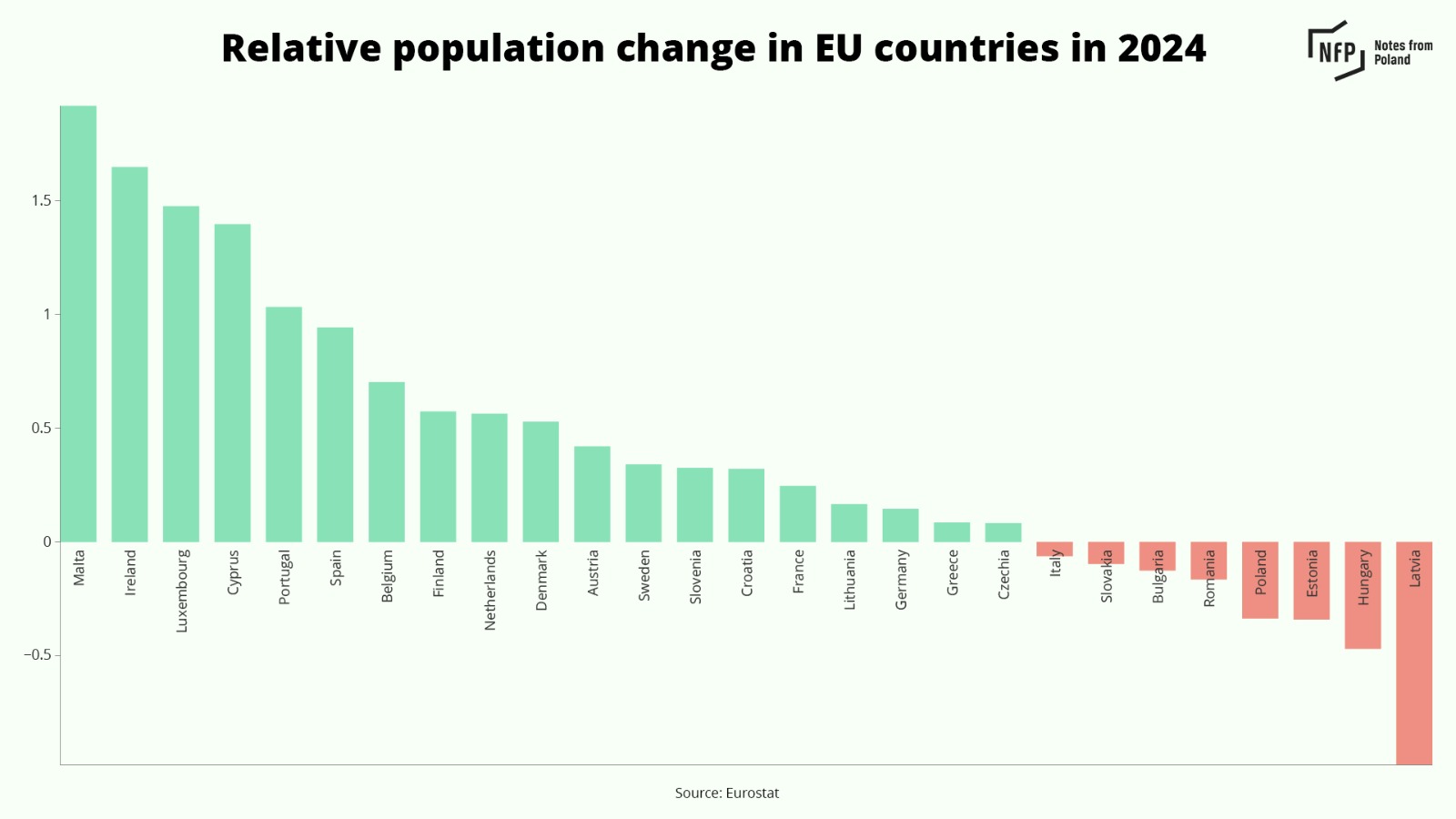Poland records EU's largest population decline for second year running

Poland's population fell by over 123,000 in 2024, the largest overall decline among all European Union member states for the second year in a row . In relative terms – taking account of the size of countries' population – Poland had the EU's joint-third-largest drop of 0.34%.
The data for 2024 mark the sixth consecutive year that Poland's population declined amid a demographic crisis that the country's statistical agency has forecast will continue in the coming decades.
By contrast, most EU member states noted a population increase in 2024, with the bloc's overall population growing by 1.07 million, or 0.24%.

Between 1 January 2024 and 1 January 2025, Poland's population decreased from 36,497,495 to 36,620,970, a decrease of 123,475, new Eurostat data show.
That was the largest figure in the EU, ahead of Hungary (-45,125) and Italy (-37,053). At the other end of the scale, the largest population increases were recorded by Spain (458,289), France (292,567) and Germany (121,095).
In terms of relative decline, Poland's population drop of 0.34% was the joint third highest alongside Estonia. Latvia (-0.99%) and Hungary (-0.47%) had the biggest falls. The largest proportional increases were recorded in Malta (+1.9%), Ireland (+1.6%) and Luxembourg (+1.47%).
Eurostat attributes the overall population growth in the EU to increased migratory movements. “Since 2012, the negative natural change (more deaths than births) in EU population has been outnumbered by the positive net migration,” it explained.
Net immigration contributed to a population increase of 2.3 million people in the EU in 2024, with the highest increases in Spain and Germany. There were only three EU countries where the number of births increased year-on-year: Luxembourg (+2.2%), the Netherlands (+1%) and Finland (+0.8%).
Poland itself has experienced unprecedentedly high levels of immigration in recent years, and has also received a large number of Ukrainian refugees. However, this has failed to offset a negative demographic trend influenced by falling birth rates and high excess death numbers during the pandemic.

Last year saw the number of births in Poland fall to a new postwar low . It was the 12th year in a row in which deaths have outnumbered births.
Poland's fertility rate – the average number of children that are born to a woman over her lifetime – also fell to a new record low of 1.099 , which is among the lowest in the world.
Poland's state statistical agency, GUS, estimates that Poland's population will continue to decline in the coming decades and could fall to as low as 26.7 million by 2060, which would be 27% lower than today.
In 2023, the state Social Insurance Institution (ZUS) estimated that, in order to maintain its current ratio of working-age population to retirees, Poland would need to attract almost two million immigrant workers over the next decade.
Poland's fertility rate, already one of the lowest in the world, fell to a new record low of 1.1 in 2024 https://t.co/f88NelAfZh
— Notes from Poland 🇵🇱 (@notesfrompoland) June 2, 2025
Main image credit: Caio/Pexels
notesfrompoland



![With the wind in our sails and no phones. 6 days full of adventures on Lake Solina [PHOTOS]](/_next/image?url=https%3A%2F%2Fzycie.pl%2Fstatic%2Ffiles%2Fgallery%2F561%2F1682227_1750692710.webp&w=3840&q=100)

